Blue Stemmed Goldenrod
- October 17, 2023
- 0 comment
Blue Stemmed Goldenrod, scientifically known as Solidago caesia, is a captivating North American wildflower cherished for its striking appearance and ecological significance. This perennial plant is characterized by its elegant blue-green stems, which stand out against a backdrop of vibrant golden-yellow flowers that bloom in late summer and fall. Blue Stemmed Goldenrod can be found in a variety of habitats, from woodlands to open meadows, making it a versatile and adaptable species.


Its nectar-rich blossoms attract pollinators like bees and butterflies, contributing to the local ecosystem’s vitality. Beyond its aesthetic appeal and ecological benefits, this goldenrod also boasts a rich history of traditional medicinal uses, with Native American tribes utilizing it for its potential healing properties. Blue Stemmed Goldenrod serves as a testament to the beauty and ecological importance of native flora in North America, making it a beloved addition to gardens and natural landscapes alike.
| Characteristics | Description |
| Scientific Name | Solidago caesia |
| Common Name | Blue Stemmed Goldenrod |
| Plant Type | Perennial |
| Height | 1 to 3 feet (30 to 90 cm) |
| Flower Color | Golden-yellow |
| Bloom Time | Late summer to fall |
| Habitat | Woodlands, meadows, open areas |
| Foliage Color | Blue-green |
| Pollinators | Bees, butterflies |
| Medicinal Uses | Traditional medicinal uses by Native American tribes |
| Ecological Role | Provides nectar for pollinators, supports local ecosystems |
| Cultivation | Adaptable, grows in various habitats |
| Special Features | Aesthetic appeal, ecological significance |
Botanical Beauty of “Blue Stemmed Goldenrod”
The Blue Stemmed Goldenrod, scientifically known as Solidago caesia, stands as a testament to the exquisite beauty that native North American wildflowers bring to our landscapes. This captivating perennial plant is renowned for its striking appearance and is cherished by gardeners and nature enthusiasts alike. Let’s delve into the botanical beauty of Blue Stemmed Goldenrod and uncover the reasons behind its enduring appeal.
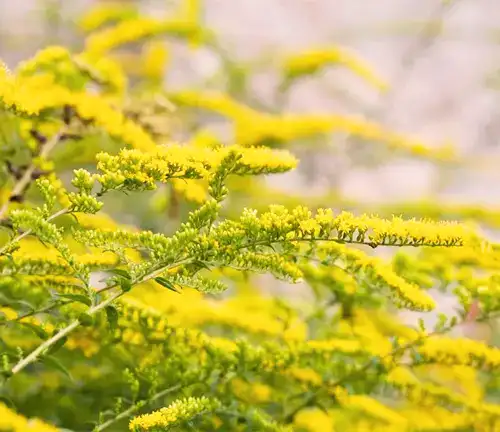
Woodland Elegance
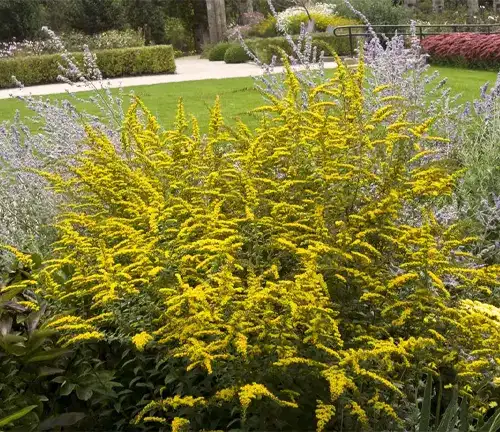
One of the key features that sets Blue Stemmed Goldenrod apart is its enchanting blue-green stems, which offer a stark contrast to its vibrant golden-yellow flowers. These delicate, lance-shaped blossoms adorn the plant and create a visually stunning spectacle, especially when they come into full bloom in late summer and fall. Whether nestled in a woodland setting or gracing the edge of a garden bed, the Blue Stemmed Goldenrod exudes a sense of woodland elegance that is hard to ignore.
Ecological Importance
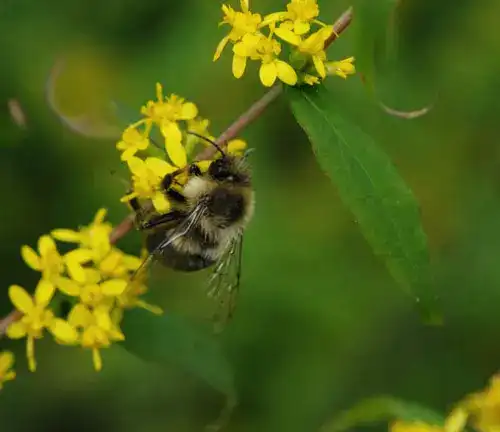

Beyond its aesthetic appeal, Blue Stemmed Goldenrod plays a crucial role in supporting local ecosystems. The nectar-rich flowers act as a magnet for pollinators, including bees and butterflies. By providing sustenance to these essential insects, Blue Stemmed Goldenrod contributes to the vitality of the entire ecosystem. In a world where pollinators face numerous challenges, the presence of native wildflowers like this goldenrod is a boon for biodiversity.
Cultivation and Conservation
Gardeners and conservationists alike have a vested interest in cultivating and preserving Blue Stemmed Goldenrod. This versatile species can thrive in various habitats, from woodlands to open meadows, making it an adaptable choice for native plant enthusiasts. However, it’s vital to be mindful of conservation efforts, as some native plant populations are vulnerable. By propagating Blue Stemmed Goldenrod responsibly and respecting its natural habitats, we can ensure the continued existence of this botanical gem.
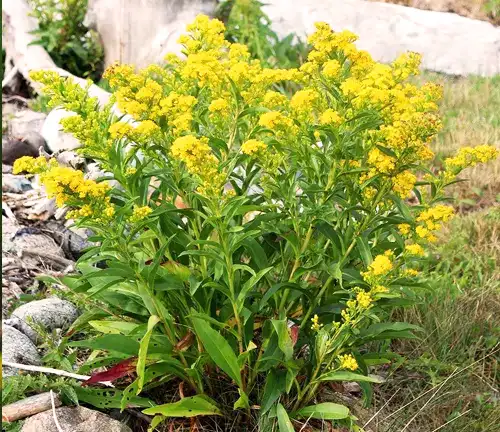
Fragrance
The fragrance of Blue Stemmed Goldenrod is often overlooked but is a pleasant surprise for those who take a moment to inhale its subtle, sweet scent. While not as overpowering as some garden blooms, the delicate fragrance adds an extra layer of allure to this already enchanting wildflower. It’s a reminder that beauty often engages multiple senses, making the Blue Stemmed Goldenrod a multisensory experience.
Soil Stabilization
Blue Stemmed Goldenrod also contributes to soil stabilization. Its extensive root system helps prevent erosion and improves the overall health of the soil. This is especially valuable in open areas and meadows where erosion control is a critical concern. The plant’s ecological role extends beyond its visual appeal, emphasizing its importance in preserving and restoring natural landscapes.

Common Uses
The rich history of traditional medicinal uses of Blue Stemmed Goldenrod by Native American tribes is a testament to its cultural significance. These uses range from potential remedies for various ailments to poultices for wounds. While it’s essential to approach these uses with caution and consult experts in herbal medicine, the historical significance of the plant is undeniable.
Benefits
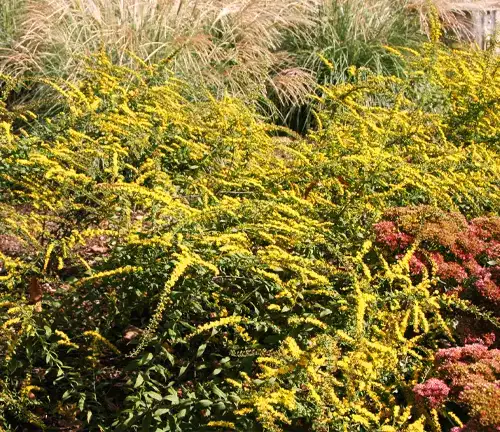
In summary, the Blue Stemmed Goldenrod, with its botanical beauty, ecological importance, adaptability, and fragrant blooms, offers a compelling case for its inclusion in gardens and natural landscapes. Its contributions to soil stabilization, support for pollinators, and potential traditional uses make it a multi-faceted wonder. By recognizing and conserving this splendid native wildflower, we not only enhance our surroundings but also play a role in preserving the delicate balance of our ecosystems.
Different Species
Solidago gigantea
Also known as Giant Goldenrod, this species can reach impressive heights, with large, plume-like inflorescences of bright yellow flowers.
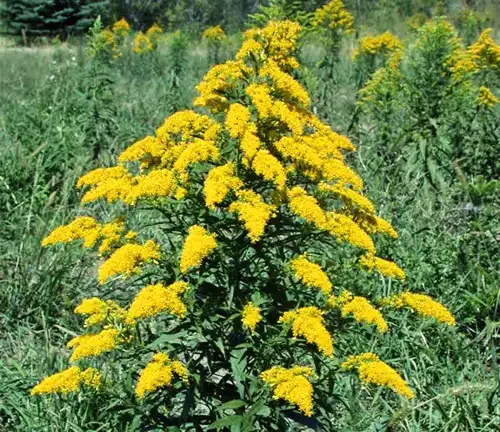
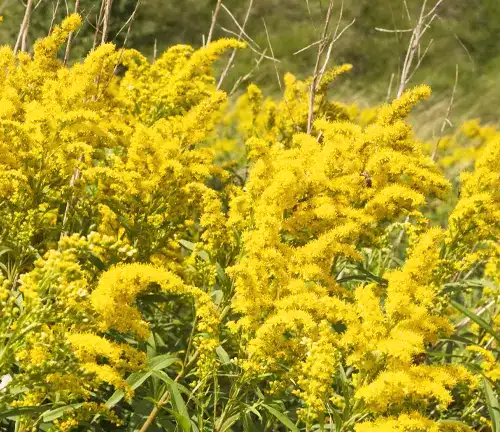
Solidago canadensis
Canadian Goldenrod, characterized by its tall stems and feathery yellow flower clusters, is one of the most widespread goldenrod species in North America.
Solidago rugosa
Rough-stemmed Goldenrod features rough-textured leaves and a profusion of small, bright yellow flowers. It is known for its adaptability to various soil types.

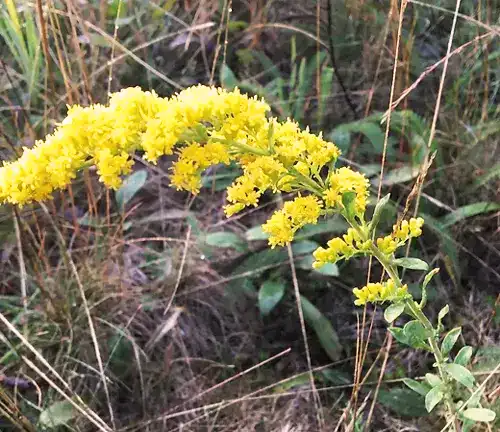
Solidago nemoralis
Also called Gray Goldenrod, this species has tiny, bright yellow flower heads and is often found in dry, rocky areas.
Solidago speciosa
Showy Goldenrod stands out for its large and showy flower heads, which are more abundant and robust than many other goldenrod species.
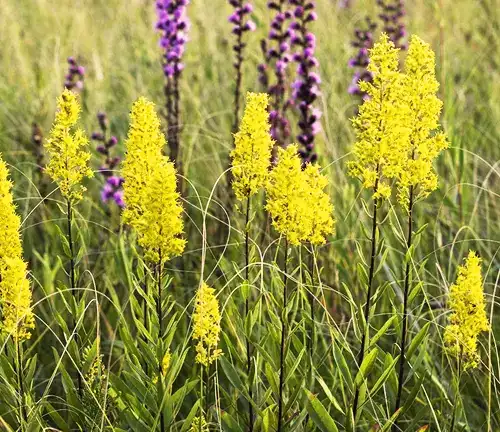
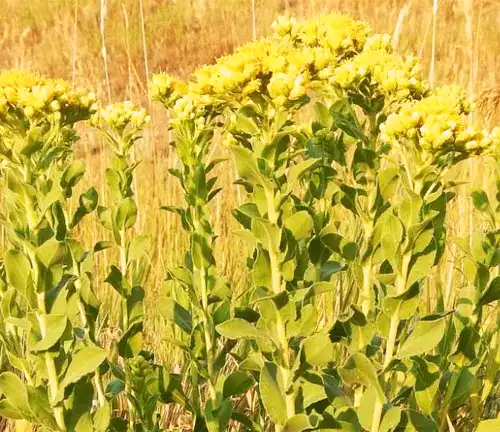
Solidago rigida
Stiff Goldenrod has sturdy, upright stems and clusters of small yellow flowers. It is commonly found in prairies and open areas.
Solidago altissima
Tall Goldenrod, as the name suggests, can reach impressive heights. It is known for its feathery, yellow flower clusters that attract pollinators.
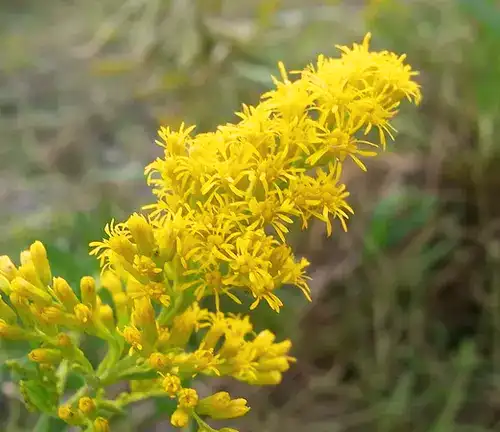
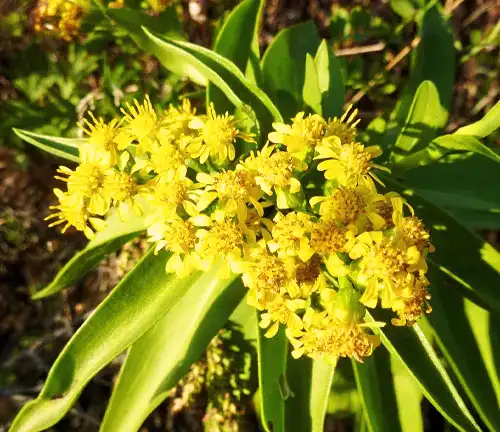
Solidago sempervirens
Seaside Goldenrod is adapted to coastal environments and features striking spikes of yellow flowers. It is a valuable plant for stabilizing dunes.
Frequently Asked Questions (FAQs)
- What is Blue Stemmed Goldenrod?
Blue Stemmed Goldenrod, scientifically known as Solidago caesia, is a North American native wildflower known for its distinctive blue-green stems and bright golden-yellow flowers. It’s a perennial plant with aesthetic and ecological significance. - Where is Blue Stemmed Goldenrod typically found?
This species is versatile and can be found in various habitats, including woodlands, meadows, and open areas. It is native to parts of North America. - What is the ecological importance of Blue Stemmed Goldenrod?
Blue Stemmed Goldenrod provides nectar-rich blossoms that attract pollinators like bees and butterflies, supporting local ecosystems by aiding in pollination. - How do you cultivate Blue Stemmed Goldenrod?
Blue Stemmed Goldenrod is adaptable and can be cultivated in gardens, provided it’s given suitable growing conditions. It thrives in well-drained soil and prefers partial to full sunlight. - Are there any conservation concerns with Blue Stemmed Goldenrod?
While not endangered, it’s important to be mindful of responsible cultivation and conservation efforts, as overharvesting or habitat destruction can impact native plant populations. - Does Blue Stemmed Goldenrod have a fragrance?
Yes, Blue Stemmed Goldenrod emits a subtle, sweet fragrance, though it’s not as strong as some other garden flowers. - What is the traditional medicinal use of Blue Stemmed Goldenrod?
Native American tribes have historically used Blue Stemmed Goldenrod for potential medicinal purposes, including remedies for various ailments and poultices for wounds. - Does Blue Stemmed Goldenrod have soil stabilization benefits?
Yes, this wildflower has an extensive root system that helps prevent soil erosion, making it valuable in stabilizing soil, particularly in open areas and meadows. - Can Blue Stemmed Goldenrod be a part of a garden landscape?
Yes, Blue Stemmed Goldenrod’s unique appearance and ecological benefits make it a great addition to gardens, especially for those interested in native plant gardening. - How can I best support the conservation of Blue Stemmed Goldenrod and similar native plants?Supporting local conservation efforts, practicing responsible gardening, and maintaining the natural habitats of these plants are all ways to contribute to their preservation.





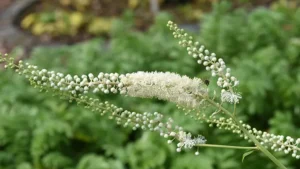


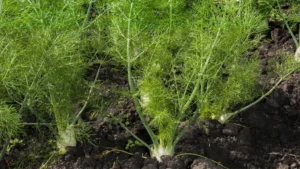


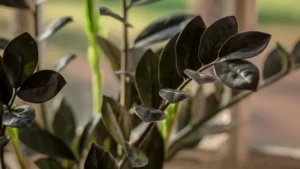
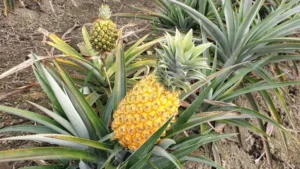
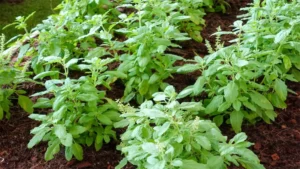
Leave your comment